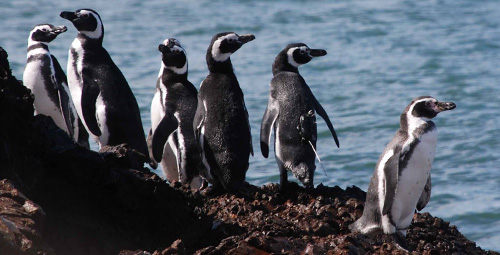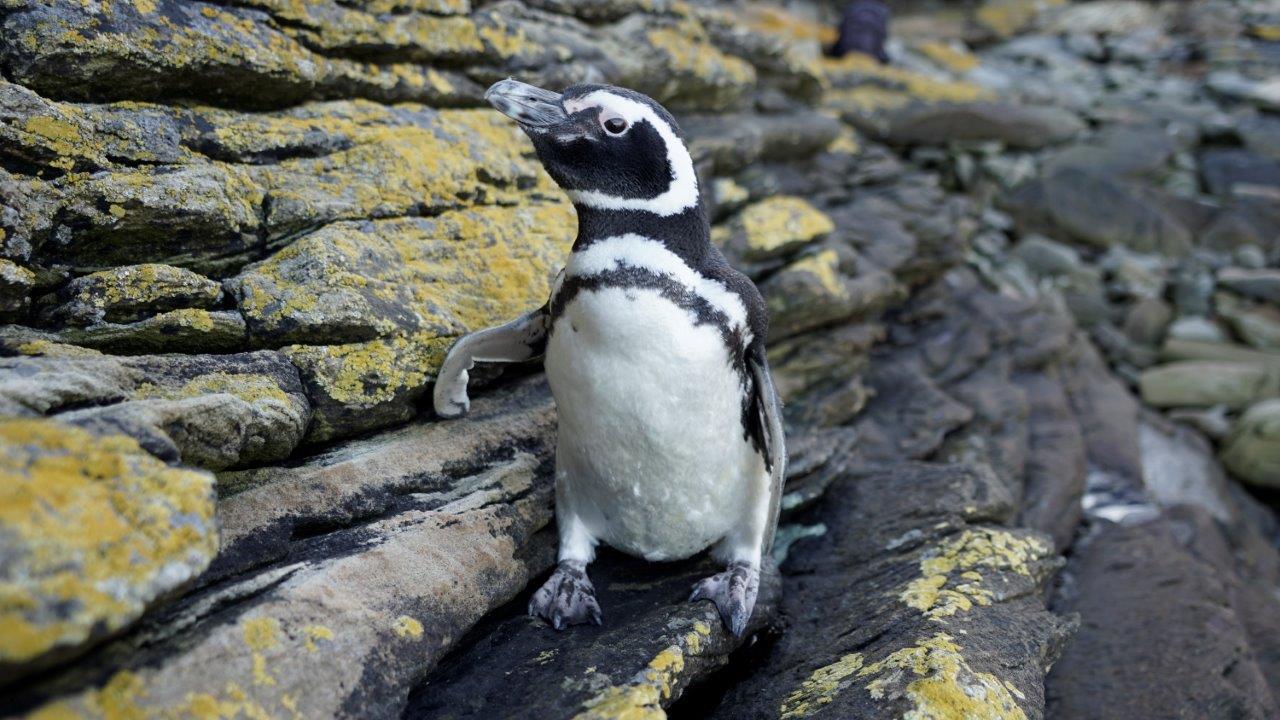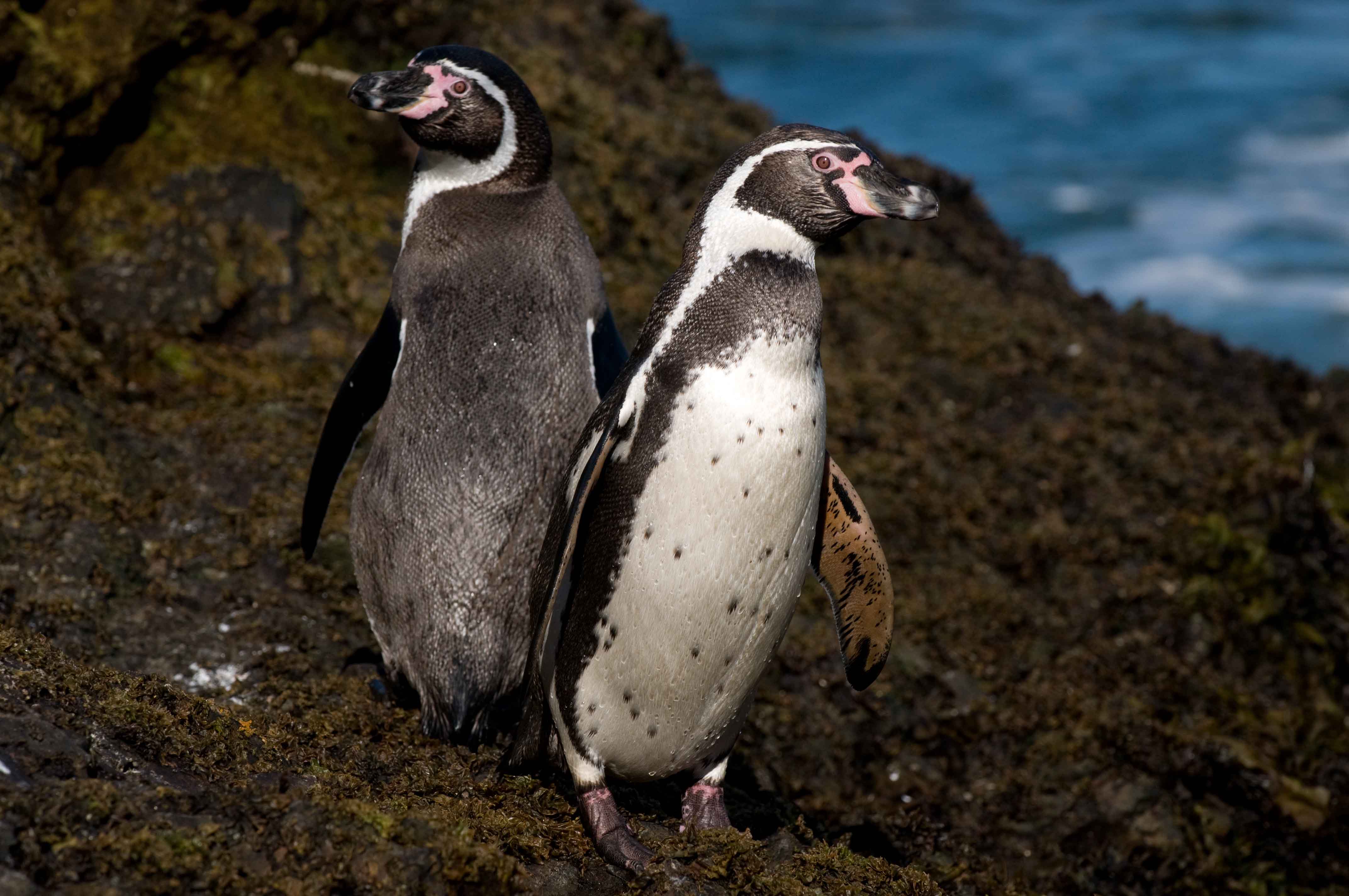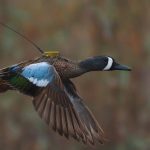← Back
Shedding new light on South American penguins home range

Humboldt and Magellanic penguins live in the southern tip of South America. On the Pacific coast, they benefit from the high productivity of the Humboldt Current but are also threatened by artisanal fisheries. They are thus considered as either vulnerable or near threatened, and conservation measures should be taken. Their Argos tracking by the Antarctic Research Trust should help protect them.
Humboldt penguins (Spheniscus humboldti) and Magellanic Penguins (Spheniscus magellanicus) live mostly in different areas on the Pacific side of South America, except for a few places like the Islotes Puñihuil, at the north-western tip of Isla Grande de Chiloé in south-central Chile, where both these species breed. The birds benefit from the high productivity of the Humboldt Current but are threatened there by artisanal fisheries.
Defining a marine protected area
A marine protected area in the wintering grounds, e.g. around Isla Mocha or in the Gulf of Arauco would be interesting to develop to protect migrating penguins and other seabirds, in addition to adequate conservation measures. However, while conservation measures have been partially established on a local scale, more efforts would be required, for example, by helping local fishermen engage in ecotourism.
Tracking the penguins
Ten Humboldt and eight Magellanic Penguins were successfully equipped with Argos satellite transmitters in March 2009 on Islotes Puñihuil in central south-Chile, to follow them when they disperse after having moulted. Humboldt Penguins were followed for 25 to 93 days (49 days on average) and Magellanic Penguins for 35 to 68 days (57 days on average). Seven of those birds remained in the vicinity of their breeding ground throughout the period. All the other tracked penguins moved northwards, either only a relatively short distance (max 400 km) to Isla Mocha at 38°S, or further North, beyond 35°S. Eight of these birds (73%) turned South again towards the end of the individual tracking periods. The total area used by both species during the tracking period was a coastal strip stretching from the breeding site at 42°S to 1000 km to the North at 32°S.
![Movements of Humboldt (males = squares, females = circles) and Magellanic Penguins (males = triangles, females = diamonds) from Islotes Puñihuil. Given the different spatial scales during the respective tracking periods, data for both species were pooled in relation to the maximum distance from the colony. Movements separated according to birds (a) foraging locally, (b) travelling up to Isla Mocha and (c) further north. Each color/shape pair corresponds to a different individual. Figure from [Pütz et al., 2016]. (credits Antarctic Research Trust)](https://www.argos-system.org/wp-content/uploads/2022/02/1-s2.0-S2351989416300415-gr1.jpg)
Movements of Humboldt (males = squares, females = circles) and Magellanic Penguins (males = triangles, females = diamonds) from Islotes Puñihuil. Given the different spatial scales during the respective tracking periods, data for both species were pooled in relation to the maximum distance from the colony. Movements separated according to birds (a) foraging locally, (b) travelling up to Isla Mocha and (c) further north. Each color/shape pair corresponds to a different individual. Figure from [Pütz et al., 2016]. (credits Antarctic Research Trust)
More info about birds tracking
Different behaviors
If nearly all the Humboldt penguins were located in areas where you could find also Magellanic penguins, the latter species was found in another area, for nearly half of the studied birds. The results indicate different behavior of the Pacific side penguins when compared to the Atlantic side birds: Magellanic Penguins in the Pacific Ocean are probably less migratory, while Humboldt Penguins appear to be more migratory than previously believed. A comparison with Chlorophyll-A remote sensing maps and also with the amount of regional fish catches by artisanal fishery show a poor relationship in those coastal foraging grounds.
Photo: Magellanic penguins, including one with an Argos tag on its back, and one Humboldt penguin (credits Antarctic Research Trust)
References:
Klemens Pütz, Andrea Raya Rey, Luciano Hiriart-Bertrand, Alejandro Simeone, Ronnie Reyes-Arriagada, Benno Lüthi, Post-moult movements of sympatrically breeding Humboldt and Magellanic Penguins in south-central Chile, Global Ecology and Conservation, Volume 7, 2016, Pages 49-58, ISSN 2351-9894, https://doi.org/10.1016/j.gecco.2016.05.001. (http://www.sciencedirect.com/science/article/pii/S2351989416300415)



